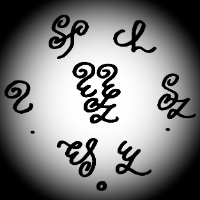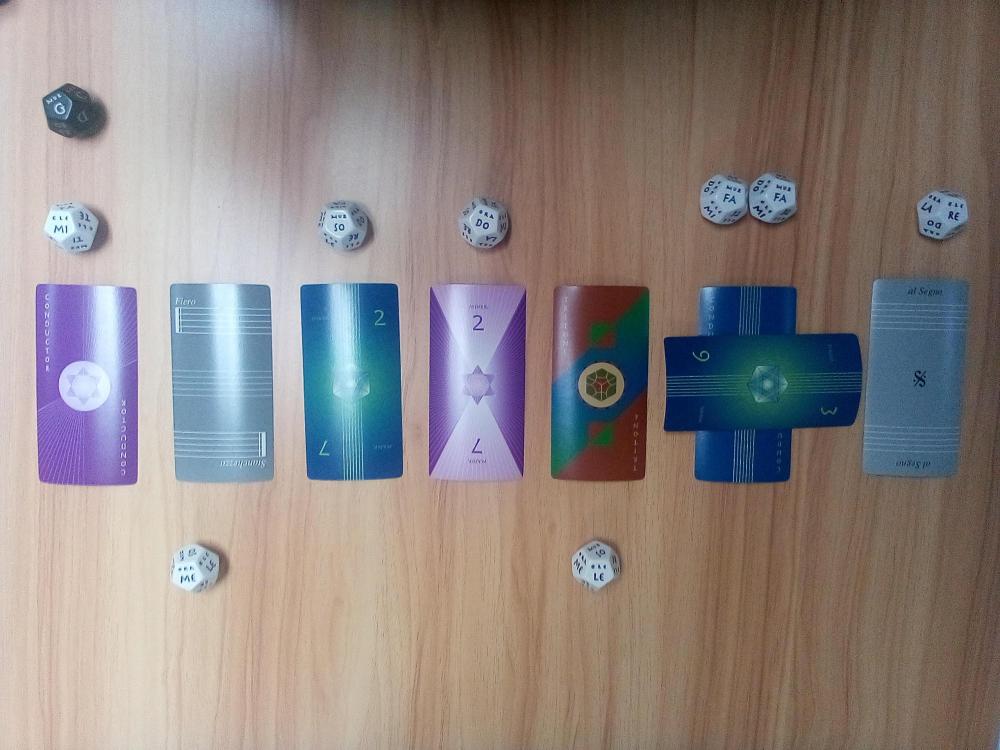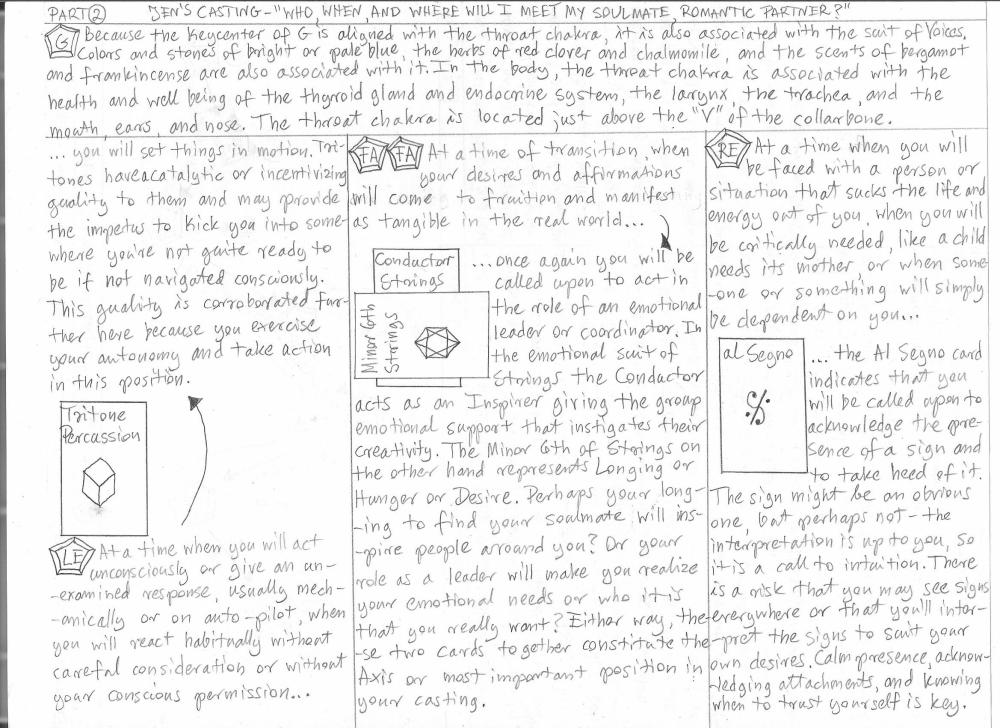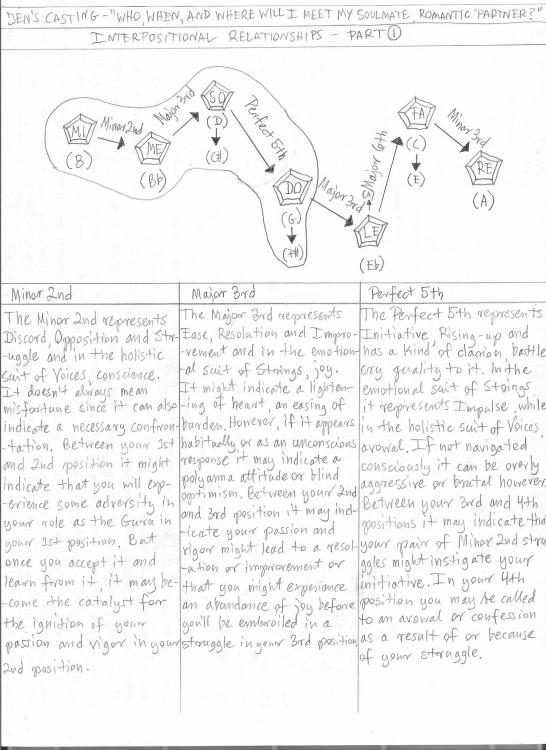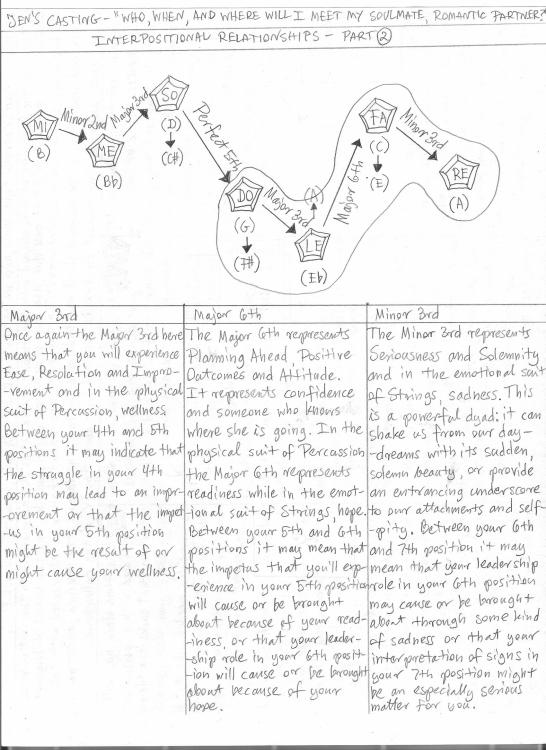Leaderboard
Popular Content
Showing content with the highest reputation since 12/09/2025 in all areas
-
I started this piece this morning and managed to finish it this evening! My inspiration was to write a fast Christmas piece as my pieces lately have all veered towards the same slow tempo. The form of the Scherzo is ternary and the overall form is Scherzo - Trio - Scherzo. Thanks for listening and I'd appreciate any of your comments, suggestions, critiques or observations!7 points
-
Thanks to all 20 participants who submitted a whopping total of 26 submissions to the 2025 Christmas Music Event! They will be the recipients of the "2025 Christmas Participant" award! - A Christmas Mash-up by @PeterthePapercomPoser Jesus was Born this Day by @Vonias Another Christmas Mash-up by @PeterthePapercomPoser My submission to the 2025 Christmas event!!!!!!!!!!!!!!!!!! by @therealAJGS Song for the Fallen (2025 Christmas Music Event Submission) by @Musicman_3254 Submission to the 2025 Christmas Music Event by @TristanTheTristan March of the Gingerbread People (2025 Christmas Event Submission) by @Crescent Roulade Fugue on "We wish you a Merry Christmas" (2017) by @J. Lee Graham Motet a 8 "O Magnum Mysterium" in E-flat Major by @Fugax Contrapunctus fantasia on jingle bells (2025 Christmas Event Submission) by @Monarcheon March of the Snowflakes - 2025 Christmas Event Submission by @Vavrinec O Soul, Seek Revelation 14:9-11 by @SeekJohn14v6 (Very Casual) Christmas Mesh Up by @HoYin Cheung The Empty Church - Submission to the YCF 2025 Christmas Event by @Wieland Handke Highland Shepherds - Submission to the YCF 2025 Christmas Event by @Wieland Handke Jingle Bells and Dashing Through the Snow by @chopin Christmas Carol by @Aiwendil Instead of Christmas (Submission to 2025 Christmas Event) by @Luis Hernández Coventry Carol (Christmas 2025) by @mercurypickles With Every Beat My Heart Knows by @HoYin Cheung A Christmas Scherzo by @PeterthePapercomPoser I composed a Christmas Song! - It went great! by @raymond doerr My Christmas Submission by @Mooravioli Christmas Mash-up No.3 by @PeterthePapercomPoser Glory to God by @SeekJohn14v6 Nutcracker inspired final by @Tunndy And thanks to all the reviewers who ardently and painstakingly reviewed all the entries to the event! (the AI generated ones aren't required): @chopin, @Henry Ng Tsz Kiu, @Wieland Handke and @PeterthePapercomPoser. They will be the recipients of the "2025 Christmas Reviewer" Award! - (Note that if people still want to review all the submissions after December 31st, they are free to do so and be added to the list of "2025 Christmas Reviewer" Award recipients ex post facto. Check how many more reviews you need to make before getting the badge in the 2025 Christmas Music Event Reviews Spreadsheet. If you're not on the list yet I will add you once you review a more substantial number of pieces.) And thanks to @PeterthePapercomPoser for the event announcement thread, managing new submissions, creating the Christmas calendar event, advertising the event in various discord servers as well as making this conclusion thread! He will receive the "2025 Christmas Organizer" Award! - And we all hope that you had a Merry Christmas and that your 2026 year will be great!!! To see the 2025 Christmas Music Event announcement thread go here:7 points
-
Hello, all. Coming at you with something a little different for the event, but I hope you find it at least interesting, even if you don't particularly like it. I've basically decided to get really good at writing for strings nowadays, and since I'm mostly an atonalist, cello is the easiest since computers can't play that kind of stuff; the implied timbres are super important. So enjoy hearing me poorly play this miniature fantasia on Jingle Bells. I promise there's a method to the madness 😄5 points
-
My view on the matter is that while any pieces of "music" that are generated using tools like Suno should be completely banned, the use of AI tools like Cantai to generate mock-ups from midi or notation should be allowed as they are not really any different from generating a mock-up using sound samples (as others have already said). With regards to the issue of how we should go about detecting AI "music", I like @UncleRed99's idea, though I recognise @TristanTheTristan's concern that asking for technical music theory things like starting keys/time signatures may unfairly exclude composers who do not work in theory/notation heavy genres. I propose that we require users to write a short description of their piece naming some musical elements/techniques that were used (e.g. chord progressions, instrumentation etc.) alongside any additional details they might want to mention, like maybe what inspired them?5 points
-
5 points
-
My answer of "Other" on Question 1; I don't downright "hate" the idea of generated music, as we've adapted as a society from traditionally only ever using real live instruments for music, into the use of MIDI, VST2/3, and other realistically generated playback sound. So I believe it has its uses. I've even from time to time, as a sort of "test" to AI like GPT for example, submitted a PDF and .mp3 copy of something insignificant that I wrote to the AI to see if it is truly able to determine the tonality, mood, and atmosphere of the music, while also experimenting with how well it was able to provide fast and productive feedback on the score itself. I can't say it did as good a job as people here who share my level of expertise and well beyond it, but in a pinch, It was able to identify the mistakes that I made, intentionally, on the score, as a test for what it was truly capable of and what level of knowledge in Music theory was available to it. It was dead wrong about a couple of things, as I tend to notice regularly when you ask an AI a direct question without any leading context. So the advice received should be taken with a grain of salt. Also why I believe that Bot generated music can N E V E R be a genuine form of music simply due to the fact that it's incapable of understanding the true purpose of music, it's intended affect on the human mind and emotional center, and will never be able to live up to the true original's standards of creativity. All it will do is utilize what it can find online and on streaming platforms to mimic impactful sounding music. Which to some may be enough, but to me that undermines the entire community of people who spend hours, days, weeks, months or even years to compose something intricate of the same length / duration of music that could be created with AI in seconds, and is created without any true "thought" or "feeling" put into it. Regarding my Other answer of the last Question; Potentially, we could add a form to fill out with required fields in the sub-forums for music submission posts... Such as; Work Title (untitled if not yet established): _________________________________________ Composer/Username: _____________________________ Key Signature (Maj./Min.): _______________________________________ Starting time signature: ______________ Instrumentation or Ensemble Type: ___________________________ Additional Details: ___________________________ Description of Piece: _______________________________________... *required Please attach a plain (or) watermarked PDF copy of your score (for Notation Software Users), including either a YouTube Link or attached .MP3 file for playback. If using DAW software, please attach both a MIDI file, .MP3/YT Link, as well as a description of MIDI, VST2/3 Instruments used and a few of the FX Editor plugins that were used, in order help maintain the orchestral compositional authenticity of our community 🙂- Sorry, must've had a brain fart right here. fixed it. Obviously this is simply a suggested set of questions that would be up for consideration, editing/alteration, omission etc... but I feel that this would curb most if not all low-effort "hey guys look, I just wrote this today" **(Attaches a fully mastered, 5 minute long EDM track, fresh out of the shower wearing Day clothes after trying to pass it off like they created a fully completed track with full mastering and editing by working on it tirelessly all day long just for it to have been an AI the whole time after they simply asked it like 3 prompts to alter results...)**5 points
-
Also something else I need to say about this: So I, and others, can put in hours of work writing the music, orchestration, making detailed mockups, etc. but a guy who writes a Suno prompt and has a "piece" in 5 minutes is treated as equally-valid in this event? It isn't actually even his music. Where is the "fun" in that, exactly? Why even bother? You guys say you want more people to do reviews. What your reviews are going to become if this kind of thing is permitted is a bunch of people being like "Nice prompt bro, but I would've said 'romantic soaring strings' instead of 'cinematic'".5 points
-
Although I hold that AI music is still technically music, however unethically created it is, AI music is certainly not composed. It's more so generated, and this site is arguably about the composition of music, not the music itself (although, it seems that many users haven't grasped this). For that reason, my mind is most open to being changed on Question 2. Currently, I've selected the second option—creating a sub-forum and barring AI submissions to be entered into competitions—but if someone was to push hard for banning all AI music on account of it being against the spirit of being a composer, then it's not like I'm gonna push back too hard. However, I'm sympathetic to the idea that AI is here and will be here for a while, if not permanently, so banning it outright feels a little close-minded when there's still things to be learned from it (more socially and economically than practically), just not strictly composition. I'm seeing a lot of exceptions being made for vocals/SFX creation after something has been written and making rules that are clear and foolproof to distinguish that is going to be hell, but I think it's better to have the word of another person as to the extent AI was used rather than just trying to use an AI checker or a filter. As pointed out before, those things are really murky and spotty. I don't really care about the “emotions” behind it, because—let's be real—tons of music gets written for a paycheck with no emotion or humanity. That's not a measurable quality, as far as I'm concerned. I also don't really care about the amount of effort or time put into a piece; some things are just easier for different people. As for feedback, have you seen Google AI? It could tell me the sky is blue and I'd look out my window to go check. No way in hell is that level of intelligence going to have reasonable critiques beyond just telling me what Roman numerals are being used, which isn't analysis in the first place.4 points
-
From 2023. computer with the original music score died from water damage unfortunately so there is no score. This was the most Christmas like song on my channel that I could find.4 points
-
I do not like MuseScore's playback at all, so the fact that I really enjoyed this work despite the questionable playback of MuseScore, tells you everything. This is an impressive work. Is the beginning/ending loosely, Twelve Days of Christmas? After this though, I got so absorbed into your music, I forgot it was a Christmas piece! I don't even care though. You easily captivated my attention for the full 20 minutes, I even went back to listen to the first 5 minutes again because I could swear I heard 12 days of Christmas somewhere! But every part of your work is captivating and you often change it up. I have to say the 2nd half of your piece is even more captivating. This is where we start getting really deep. By this point, Christmas is gone, and we are now in some other dimension. You do manage to bring back 12 days of Christmas about 15 minutes in though, and end on that note. This will of course be an exhausting piece to play. The rigid playback of MuseScore doesn't do this piece justice in my opinion, because I know that if we could get past the rigid playback, this has the potential to sound much more pianistic.4 points
-
March of the Snowflakes is an orchestral miniature written in a quasi march tempo, inspired by the playful motion of falling snow. This piece was composed as a small seasonal contribution to the Christmas Challenge 2025. I would be very grateful for any feedback, comments, or suggestions. Thank you for listening and sharing your thoughts.4 points
-
Here's a little Christmas card for y'all I found from a few years ago. It's probably not the best fugue ever written, not by a long shot, but it's fun. Composed: December 22 - 24, 2017 at Austin Scoring: Keyboard solo Style: Baroque Duration: 2:094 points
-
I really like listening to this style without the score, since I think part of the magic is not knowing exactly how long the phrases will be, or when a solo bass note will ring, etc. This is great Luis, it's always a pleasure to hear your music! It reminded me of quiet falling snow at night 🙂4 points
-
It’s just a fun fact that I grew up in a little German town called Pulsnitz being famous (at least in parts of Germany) of its centuries-old tradition of gingerbread making. But honestly, I just know how they taste like, I never cared about what they might „sound“ like. Now listening to it, it reminds me of a musical box which is a typical handcrafted Christmas accessory. So it really puts me in the Christmas spirit by combining its cheerful sound, despite its repetitions, with the smell of mulled wine, grilled sausages, and even gingerbread at a Christmas market.4 points
-
Fun depiction of such an ancient carol. Love how the soprano has a mind of its own though; we can basically call this the disruptor. It blends nicely, but also ads some friction to this well harmonized tune.4 points
-
Looking at the score, I was initially somewhat surprised that a lot of notes had lost their stems. Being sure that this was intentionally and reading a bit about „Tintinnabuli“, I now understand that device of minimalization, even in the notation. The piece itself exudes a kind of calmness and melancholy which emphasizes the silence and toughtfulness one would feel around Christmas time. Concerning the „Tintinnabuli“-technique, it is surprising for me how one can create such colorful melodies from mostly stepwise thirds and blend them together with only arpeggiated triads of the main tonic chord, without loss of harmonic functionality and without introducing dissonances (but, haha, I think I’ve discovered a G in bar 18). Thank you for sharing and a happy New Year 2026!4 points
-
This is my first submission (of two) to the YCF 2025 Christmas Event. We are all awaiting (or at least the children do wait for) Christmas Eve. Since there are still a few days to go, the time should be peaceful and quiet – despite the stress and noise as it is in reality. Thus, the idea behind this piece is to imagine the night before Christmas, the church where crowds of people will gather tomorrow to celebrate Christmas Eve. The church is empty, or seems to be empty, but there are three musicians playing a piece that is reminiscent of either night music or a final rehearsal before the upcoming concert.3 points
-
In anticipation for this year's Christmas Eve, I decided to try my hand at writing another religious motet. Considering the fact that the bulk of this piece has been composed merely in the span of yet another insomnia-driven bout of inspiration, perhaps its modest length may as well be a reflection of missed potential, as I reckon it could have been developed into a more complex structure should its latter half not have got stuck on a protracted pre-cadential spiral. Once again, just as with my previous vocal fugue, the main goal of this composition was to make the text as intelligible as possible (specially taking into account the musical history of such a well-known textual setting), that is, within the confines and constraints of an 8-voice motet. This has ultimately led to some interesting contrapuntal oddities which, despite the preservation of independent voice-leading and thorough avoidance of melodic and harmonic blunders, have produced a number of somewhat unorthodox unresolved dissonances throughout. Nevertheless, I believe such contrapuntal licenses are more than sufficiently justified given the scope of this piece, as well as the sheer volume and density of its texture all the way through. This piece was specifically conceived as a submission for this year's edition of the forum's Christmas Music Event, and shall be presented accordingly in its dedicated thread. YouTube video link:3 points
-
For my 2nd submission to this year's Christmas Music Event I come to you with yet another mash-up of two Christmas Carols! "God Rest Ye Merry Gentlemen" and "Jezus Malusieńki" ("Little Jesus" in Polish). I have input 6 stanzas of each Carol here into the score. I once again wish I had Cantamus as listening to both the English and Polish lyrics at the same time would really enhance the listening experience to those who speak both languages. The piece starts off with a 3/4 variation of "God Rest Ye Merry Gentlemen" and then follows a stanza of "Jezus Malusieńki" before the Carols are combined together at the same time in various different ways, some of which are slightly polytonal. I've been told that the harmony reminds of the English Renaissance in some parts, but let me know what you think! Thanks for listening and I'd appreciate any comments, suggestions, critiques or just observations! P.S.: Here is my first Christmas Mash-up that I submitted earlier for this years Christmas Music Event:3 points
-
I totally forgot I created this on Christmas Eve of 2024 for my YouTube channel. I demonstrate 2 melodies in 1. It's only 9 seconds, but might as well demonstrate Music Jotter with a little Christmas fun.3 points
-
Another little one-minute instrumental carol to add to the ones I've written previously.3 points
-
Here is my submission: https://musescore.com/user/89049631/scores/29505320/s/jl-md7 And here is the pdf: https://drive.google.com/file/d/1oi66fwxpfjm4bvBB6mYQ9d5GGz-afdB2/view?usp=drivesdk I hope you enjoy it! ( ╹▽╹ )3 points
-
I come to you once again with my 12th Muzoracle casting! This time, Jen asked the Muzoracle "who, when, and where will I meet my soulmate, romantic partner?" (Muzoracle is a storytelling/fortune telling/divination tool similar to the Tarot card deck, but with cards with musical concepts and 12-sided Musician's dice and Solfege dice. Perhaps it may be thought of as a special musical Oracle card deck.) My interpretation of the cards and dice are displayed below. Since the casting featured two cards in the suit of Voices, I used a Soprano and an Alto. Also, there were three cards in the suit of Strings, so I used Violin, Cello and Guitar. Finally, there was a card in the suit of Percussion, so I used the Piano. I chose the Piano and Guitar because Jen has played these instruments in the past and she also happens to be an Alto. If you'd like to find out more about Muzoracle and how castings are interpreted go here: https://muzoracle.net/ This short musical interpretation of Jen's casting is about ~2 minutes long. Since the black 12-sided Musician's die landed on G, the piece is in the key of G which pertains to the throat chakra. I created the following melodic/harmonic underdrawing guided by the cards and the dice. Since the first card drawn was a Conductor of Voices card, I started with a lone soprano singing a chromatic neighbor tone to B, A#. The Violin and Guitar come in next since the Minor 2nd of Strings was drawn in the 3rd position. Following is the Alto which joins the Soprano since the Minor 2nd of Voices was drawn in the 4th position. Finally, the Piano comes in when the Tritone of Percussion card was drawn in the 5th position. The whole piece is repeated since the De Segno al Fine card was drawn in the 7th and final position. If you've gotten this far, thanks for reading! And I hope you enjoy listening to this short vocal chamber work I wrote to represent Jen's Casting. Comments, critiques, suggestions, or observations are of course, always welcome. Thanks for listening!3 points
-
I've only recently started this, but I would love to hear suggetions 😄 nutcracker inspired.pdf nutcracker inspired.mp33 points
-
@TristanTheTristan I love the piano sketch of the piano concerto. I know it is a challenge to write such a massive piece. It is great idea to write out piano sketch before you write out the full score. Not many understand this. I can the influences you mentioned throughout the piece. It definitely reminds of their writing. Using musescore is great a tool, but as @Wieland Handke mentioned it would nice to have audio version, too. and full orchestral score...when that is done. 🙂 I would love to see that. We can help you out with that. Start slow with that.3 points
-
Even if you call it an orchestral miniature (and it is short, indeed), it is a wonderful, well structured and perfectly orchestrated piece that I could listen multiple times in a loop! It brings up a number of imaginations in my mind, closely related with the Christmas time: • It could be serve perfectly as a soundtrack of a fairy tale movie that the entire family could watch together, • I imagine it being played at a Christmas market with an ice rink in the middle (the trio section, mm. 17-32), • it also cites the imagination of the „one-horse open sleigh dashing thru the snow“ (mm. 33-48), • and, of course, the snowflakes (main theme, mm. 1-7). One of my absolute favorites in this 2025 Christmas event!3 points
-
I would have so much fun with this tool. But you wrote a fun song with bold key changing and fun harmony. I like how the violin creates friction, but only through your modulations. You then normalize the harmony once SATB comes in. You are right, the lyrics are sometimes a bit garbled, but I would say it's about 90% accurate. It doesn't matter though, most people will get the idea. The lyrics may be less accurate than Suno in terms of vocals, but the trade-off is that you get 100% compositional freedom.3 points
-
Thanks guys. I just wanted the Shortest Christmas Piece award 😉! It probably took me longer to create the video than it did the actual composition haha. But hey, you guys get to see what Music Jotter is like in action. I'll be composing more once Music Jotter is ready for beta testing (soon).3 points
-
Yeah, that one would surely be awarded the „Shortest Christmas Piece“ badge (haha), thus it isn’t easy to come up with a long review on that. Even though it's certainly just for fun, such a mashup shows the potential of „simple melodies“ and how much one can do with an easy piece using counterpoint, harmonization, instrumentation, etc. Thanks for making this fun Christmas event possible, and a happy and successful New Year 2026.3 points
-
Well I would say quite a number of people do this as they only post on forum but never review other members' works... So if this breaks rule a lot of members will be considered as breaking rules... Henry3 points
-
@Wieland Handke I truly love the baroque instruments you have chosen for this trio. The counterpoint between them creates rich harmonies and melodies! I can see how this would be played with in a church.3 points
-
Hi @Luis Hernández! I love how peaceful this piece is. That bare A I don't know why, reminds me of the Veris leta facies in Carmina Burana: Thx for sharing! Henry3 points
-
Ohhh, so short but so expressive... I'm a huge fan of these mashups!3 points
-
I have no words, haha. I absolutely adore the style and the period you inspired yourself with. Plus, seeing all the details in the sheet music is a joy. And the music certainly lives up to it. Thanks!3 points
-
Ohhh, one of my favorite pieces from this Christmas Event! The combination of the three keyboard instruments is very original yet effective at the same time. The presentation and the score are beautiful.3 points
-
Ohhh, what a wonderful piece! It has such a Christmas feel when the crotales—or whatever sounds like them—burst in. The orchestration is precise and well-balanced. Thank you.3 points
-
It’s a really lovely piece and it gives me Christmas vibes for some reason. Even if it’s not perfectly written, that percussion set sounds amazing.3 points
-
This was fantastic to listen to! Your first submission was fun, but I feel like this one offers a lot more color and character. Excellent usage of all the instruments. The piece moved along, was extremely focused and had good momentum. I also feel like every note served a purpose. Well done.3 points
-
What a great piece, and very soothing. A perfect way to calm one's nerves during the stress of this holiday!3 points
-
Definitely reminds me of Tchaikovsky, and ballet style music. I can picture this piece being played in a Broadway musical.3 points
-
This is incredibly coherent for 8 voices. Normally I would say something about the strict key, but in this case, it doesn't matter. This makes the few times you do change much more noticeable. Plus the musicality is in the voices! When I listened to this again without the score, the music became even clearer to me, because my mind was not overwhelmed by all those voices visually. This was absolutely beautiful.3 points
-
Among all the other previously published canons of its type, this one might as well have turned out to be the most demanding to perform, in no small part due to the choir's conventional maximum ranges being reached in at least three voices, including both soprano (C6) and bass (E2), making it no small feat to sing. The main lyrics would roughly translate from Latin to English as follows: "In the direst of circumstances the true heart of men shall sing with great hope of leaving behind a memorable life. Even death can conquer those whose memory lies in the glory of their good deeds." The coda, as per usual, reinforces the core message in a variety of ways. YouTube video link:3 points
-
3 points
-
Lovely little piece. I guess I shouldn't be surprised that a chain of secondary dominants works so well as a fugue subject, but I think you bring out its fullest potential. It makes little moments like mm. 32–33 so lovely because it's so diatonic but keeps the spirit of the sequence. Really cool to see what parts of the theme you kept and selected in certain parts. I think m. 37 is the only bar that I'm not as big a fan of: the P5 (vaguely on ii?) into A4 (vii˚) feels a just the tiniest bit awkward because (I think? I've been having a hard time trying to think of a reason...) the third is neglected twice.3 points
-
Here's my submission! Perhaps I should have waited till Christmas Eve for its publication, though in the end I reckoned the sooner might as well be the better. P.S.: I wholeheartedly agree with the distressing concerns brought forth by @AngelCityOutlaw regarding the AI-generated music submitted for this event. It should go without saying that allowing AI-generated material to be presented on par with compositions requering hours upon hours of effort and dedication could run the risk of severly undermining the legitimacy and ultimate purpose of these community events, not just on account of the frictions and controversies caused by the presence and promotion of AI-generated content, but also on a more fundamental level which has been thoroughly implied over the course of this discussion. Despite this, I firmly believe those who want to participate and submit their art should not hesitate to do so. Why let so much time, effort and dedication go to waste after creating a work of art that is in any capacity worth far more than mere AI imitations? My take is that we should not be deterred, but rather emboldened in the face of these dire circumstances we are living through, that we may adapt to this unsettling trend and make our art known regardless. In fact, that's precisely why I think it's more important than ever not to refrain from posting our own music, lest we inadvertently pave the way for more of this AI-generated music to claim our place. It is rumoured that the Dead Internet Theory may as well soon become an increasingly encroaching and inexorable reality. By refusing to yield to the tide and sharing more of our own creations, hopefully we might briefly forestall such a harrowing prospect for this tiny little corner of the Internet where so many creative wonders are being posted and discussed every single day. The point is not to force these AI-generated compositions out by decree, but to make it so that the abundant music produced by humans in this forum may flourish beyond the scope of neural networks being used as amoral tools or shortcuts to achieve similar results in appearance, yet severely lacking in personal significance, emotional depth or even a core message capable of steering the course of the compositional process. Banning AI-generated music will not ameliorate the problem at large, but composing music through righteous hardship might as well be the only substantial antidote against the proliferation and normalization of this kind of content. That being said, I'm certain this must be quite a difficult point of contention for the forum's staff to deal with and try to find a meaningful solution for, so I won't comment further on the subject matter. In any case, I hope whichever resolution or agreement is reached on this issue will allow the course of these community events to carry on peacefully and with respect towards the time, effort and dedication proportionally invested into each submission. It is good to know that this matter is being seriously discussed by staff and high-ranking members alike, and as such I would like to thank @Henry Ng Tsz Kiu and @PeterthePapercomPoser among others for their dutiful labour in calmly trying to sort out things amidst the heat of the debate.3 points
-
Reporting them meant nothing. Their Suno prompt is still in the event and the staff didn't even really offer an explanation for why they did a 180 in a matter of minutes. You have to have principles and actually stand by them or else your principles don't mean ѕhіt. I am against AI-generated music and I will not spend precious, authentic composing hours to participate in anything alongside charlatans.3 points
-
Hey there Matthew, Do you have a teacher? Or do you study music on your own with online course guidance? My opinion is do what you want, learn what interests you, but I think it's really advantageous to continue with tonal harmony. When you learn why tonality broke down, it helps with understanding the motives atonal music is trying to achieve. Also, post your music if you haven't already! That'll really help with your growth, as even strangers on the internet can provide a wealth of knowledge. Cheers buddy3 points
-
This is quite a nice short piece! Too short... Maybe add the lick in there...3 points
-
@PeterthePapercomPoser Below you will find my review for your chorale Taste: This piece seemingly uses two traditional Christmas chorales. We can hear how one lead into the other with no hiccups. The general audience might not notice the subtle transition, but those who perform it and the carols will. This will be great piece for concert. Instrumentation: The string accompaniment provides harmonic support for the vocal. We do not hear strings often. It is often an organ. But organs cliche. To answer if this playable? Playable is not correct word. Singable is. Yes a choir can and should. The score can easy to read and follow. No issues here. Others have mentioned: it reminds them of ET 3 or Mozart or Haydn. Those great choices, but homophonic texture with harmonic language reminds of Tchaikovsky; and maybe beethoven?3 points
-
Hi all, here is a composition I began in 2011. I rediscovered it in my computer files and decided to rework it and give it some new life. Hope you enjoy the work. All comments welcome as usual.3 points


.thumb.png.8b5b433a341551e913a34392660bc95b.png)




